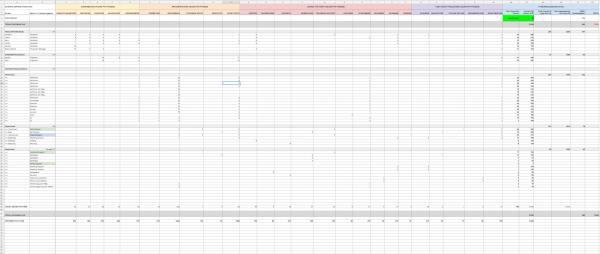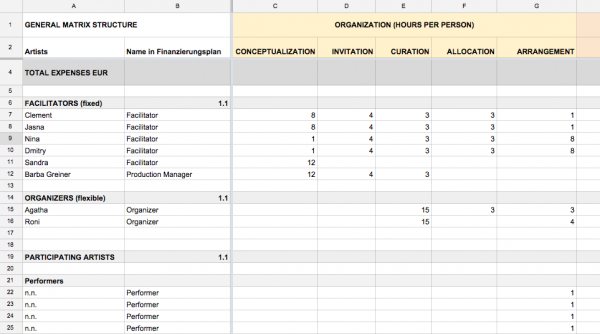A special report on the use of Special Agency’s Allocation Matrix for collaborative task scheduling and control.
Allocation Matrix is a set of principles, methodologies and a combination of software tools designed to make things happen in a decentralized, open-source, and collaborative way.
In this article we demonstrate its practical implementation in the context of organizing 3AM event (performing arts + installation + lectures + music), involving more than 25 participants and about 300 guests.

The Allocation Matrix maps the resources needed to organize an event to the people who are participating in it – either with tasks or with a financial contribution to compensate those who give their time to make the event happen. The event only takes place when all the required tasks and resources are mapped to the individuals / organizations that provide the support.

The first part of Matrix lists the personal resources required (hours of work). The columns represent the tasks that need to be done for every event in chronological order (e.g. planning, organizing, rehearsing, setting up, performing, cleaning). The rows represent every individual who is involved in performing every task. The cells have the amount of hours that each individual should spend on performing every task.
The second part of Matrix lists the material resources required (equipment, rent, materials).
The difference of Allocation Matrix from a standard budgeting system is that it is based on:
• Decentralization (the allocation of resources is decided by the participants, not the authority)
• Open-Source (every participant can see the stages of making the event possible)
• Transparency (every participant can see the resources and costs)
• Equal Redistribution (participants get back as much as they have contributed; same hourly rate for everyone)
• Resource-Based Scheduling (the next stage is only initiated when the previous one has been fulfilled)
As a set of principles the Matrix can function both as a fully-integrated software tool, or as a set of principles, which can be implemented in any freely available software, such as Google Spreadsheets (this example is for 3AM event).
